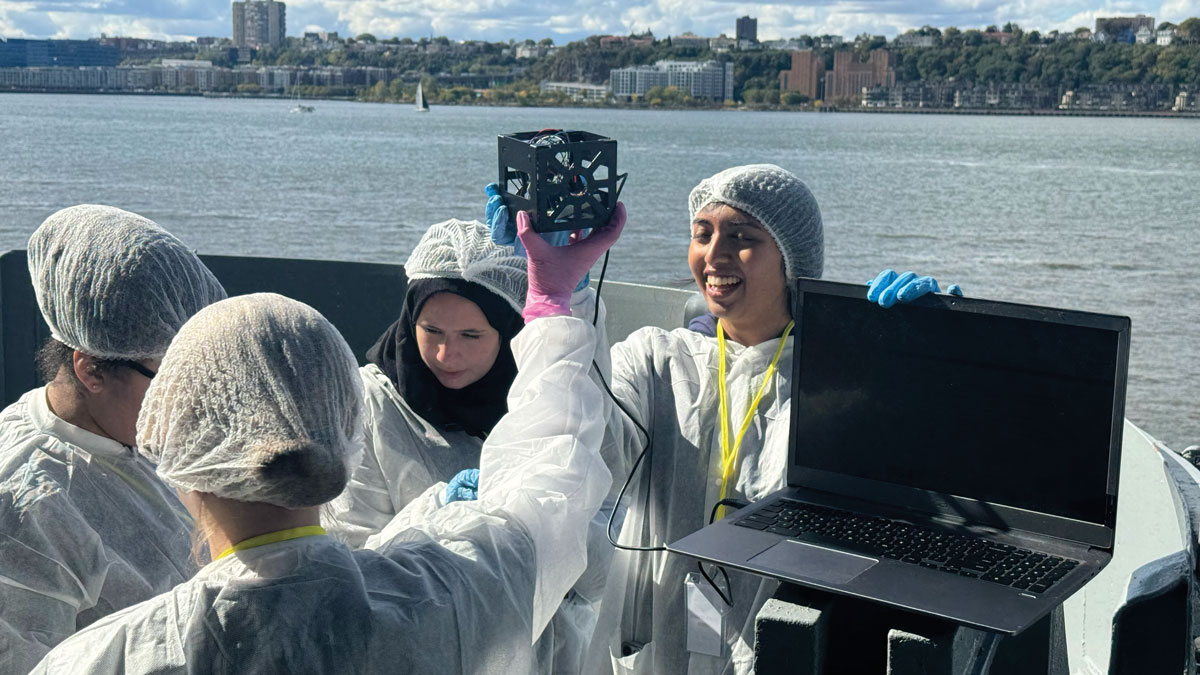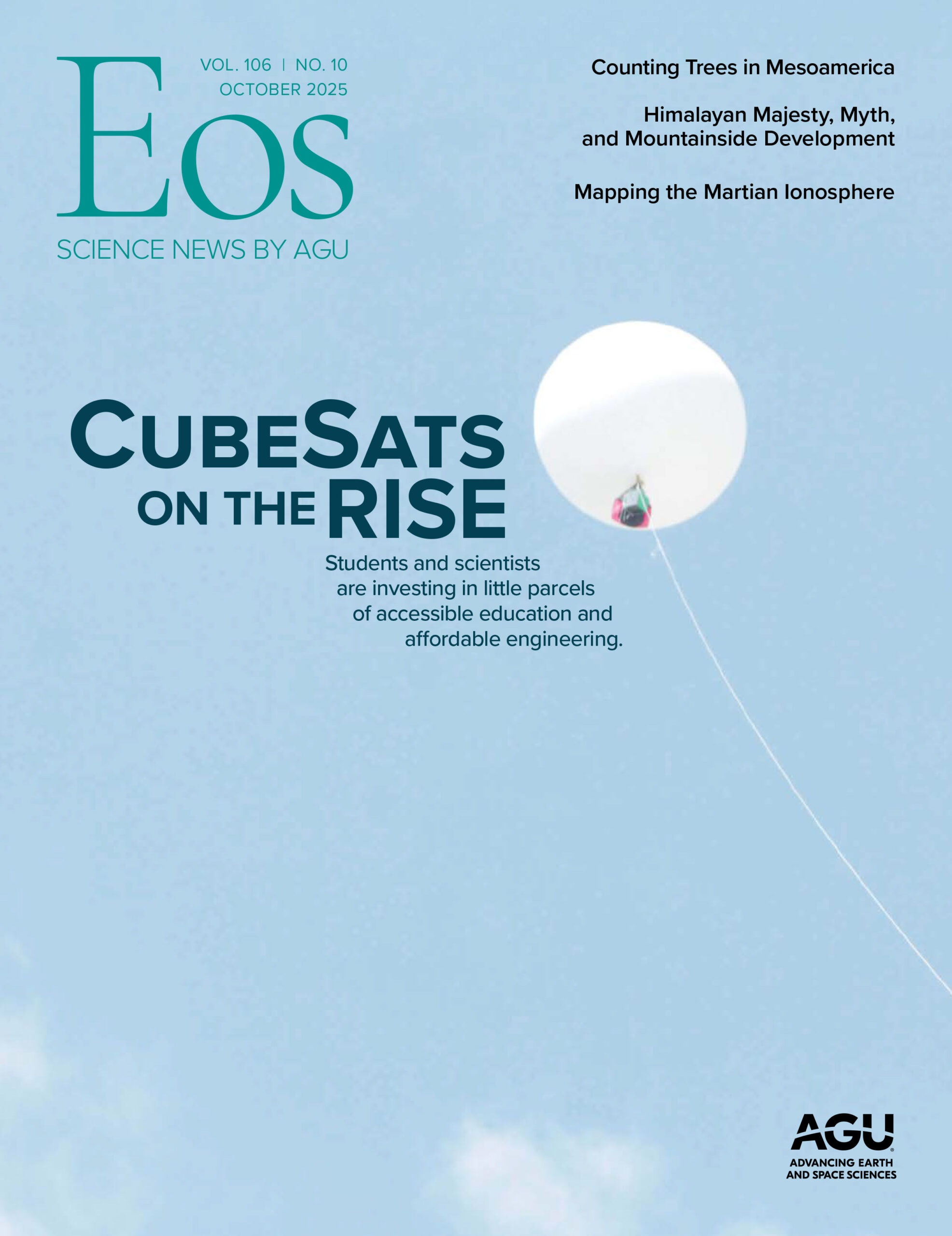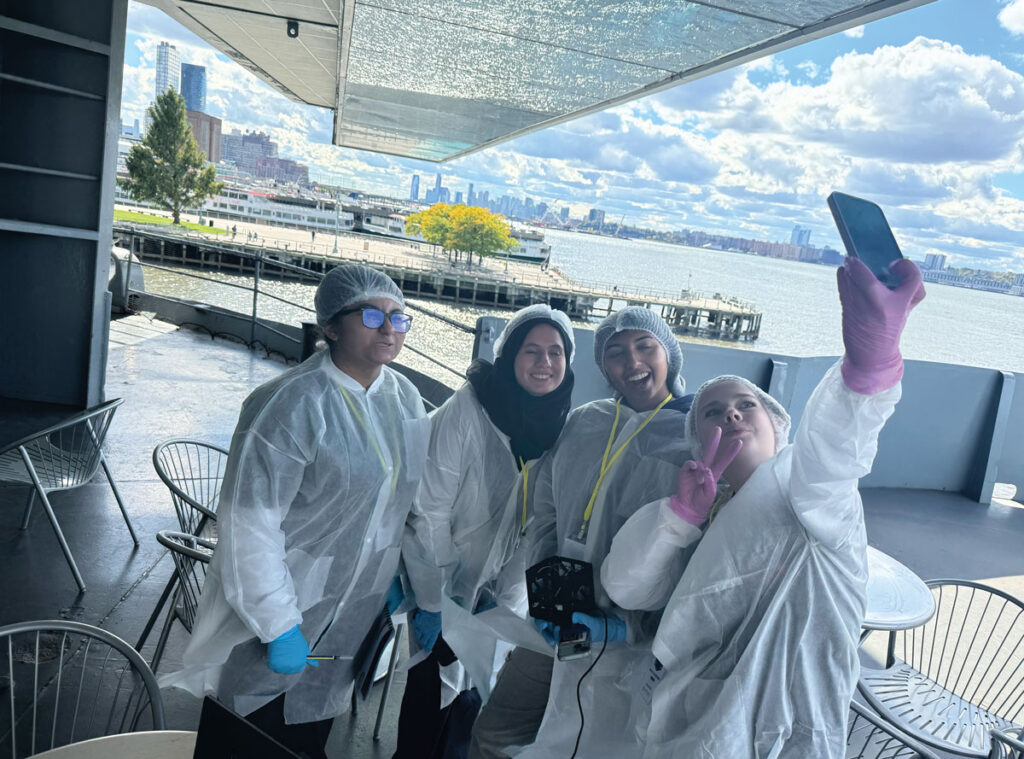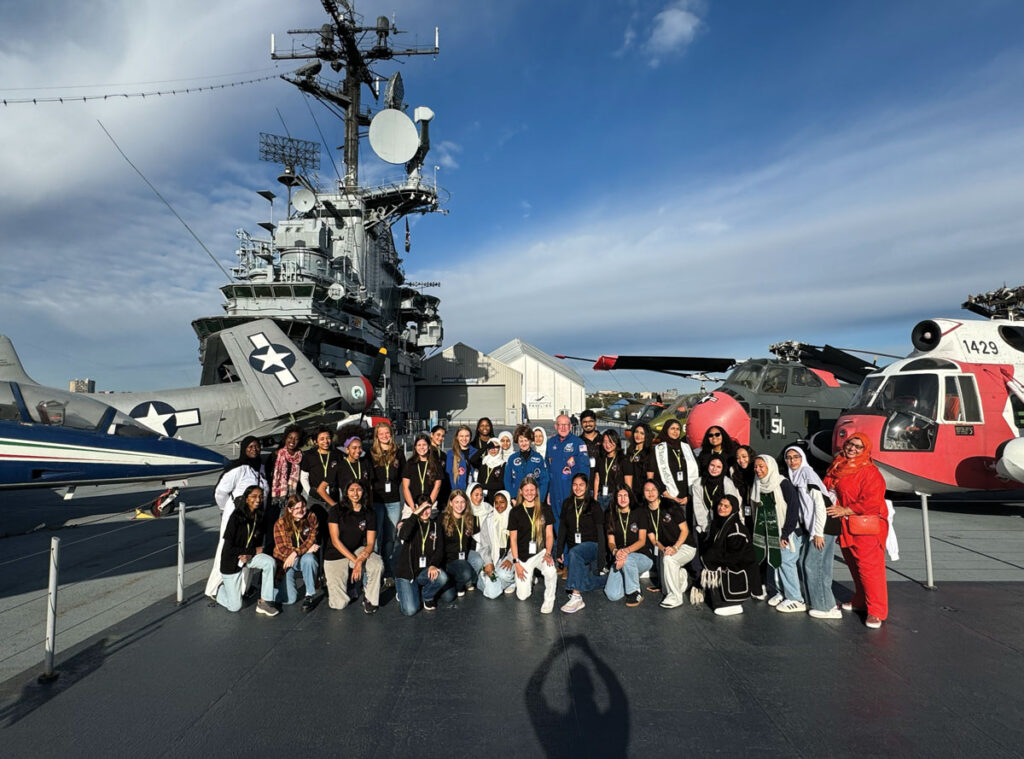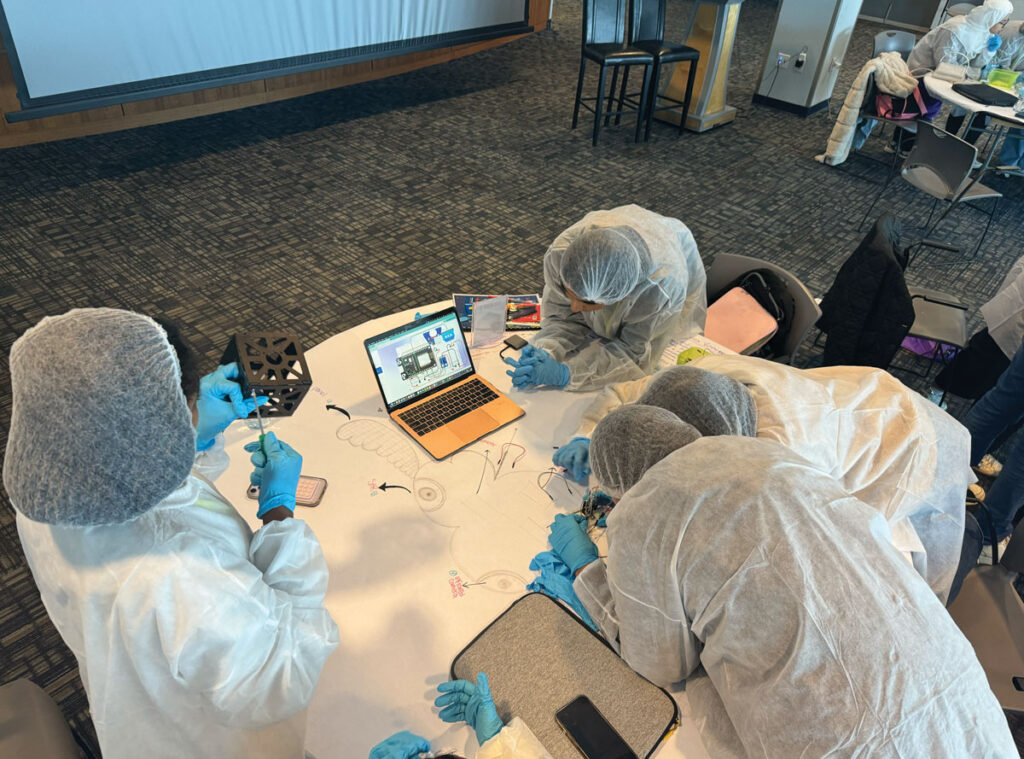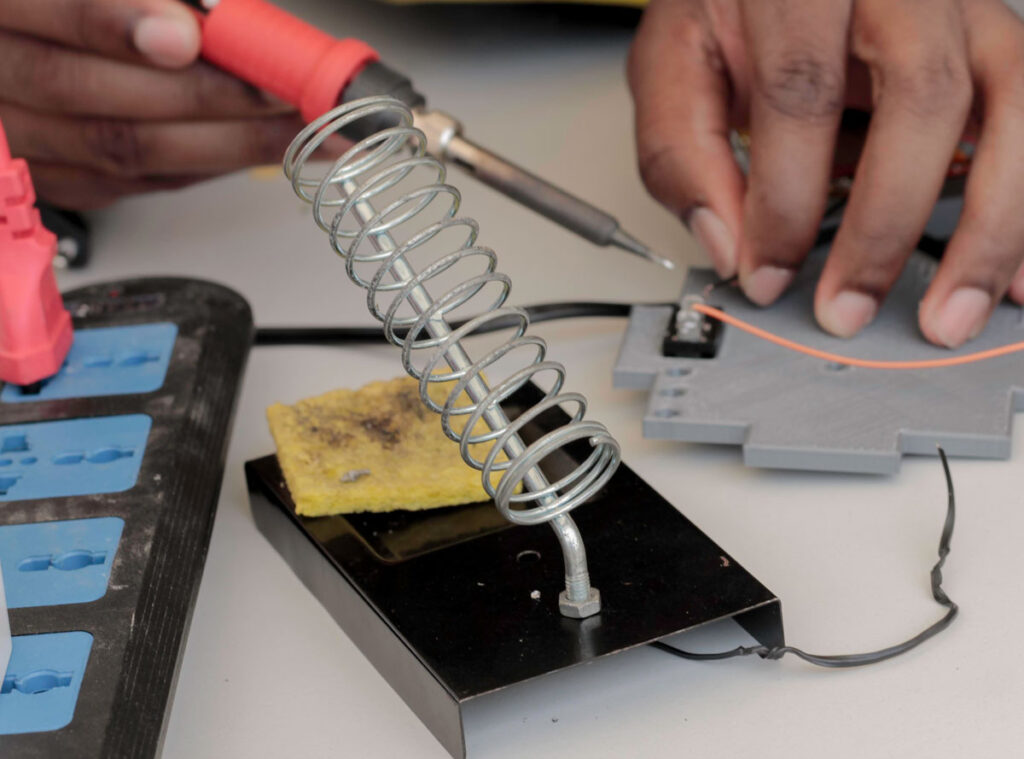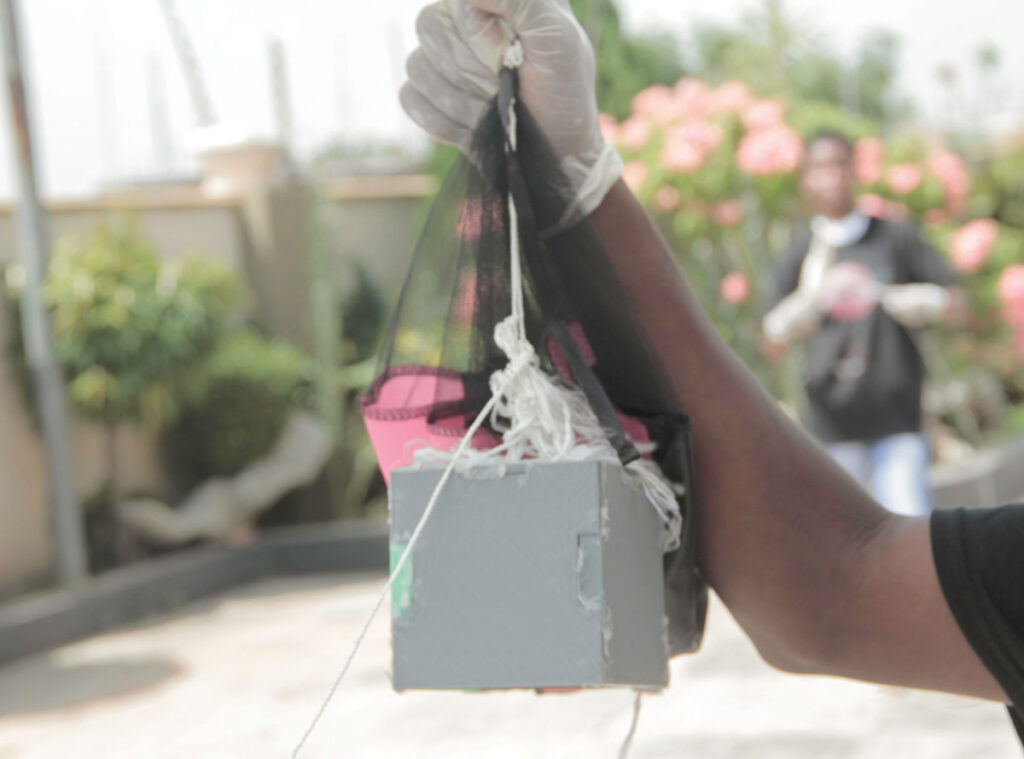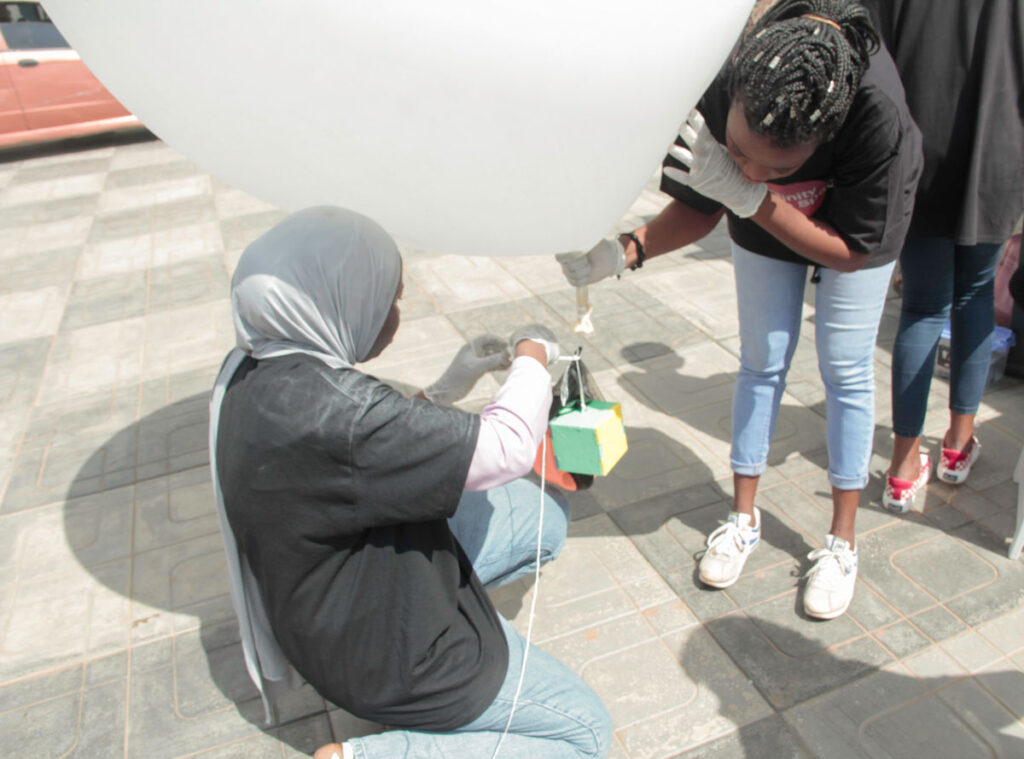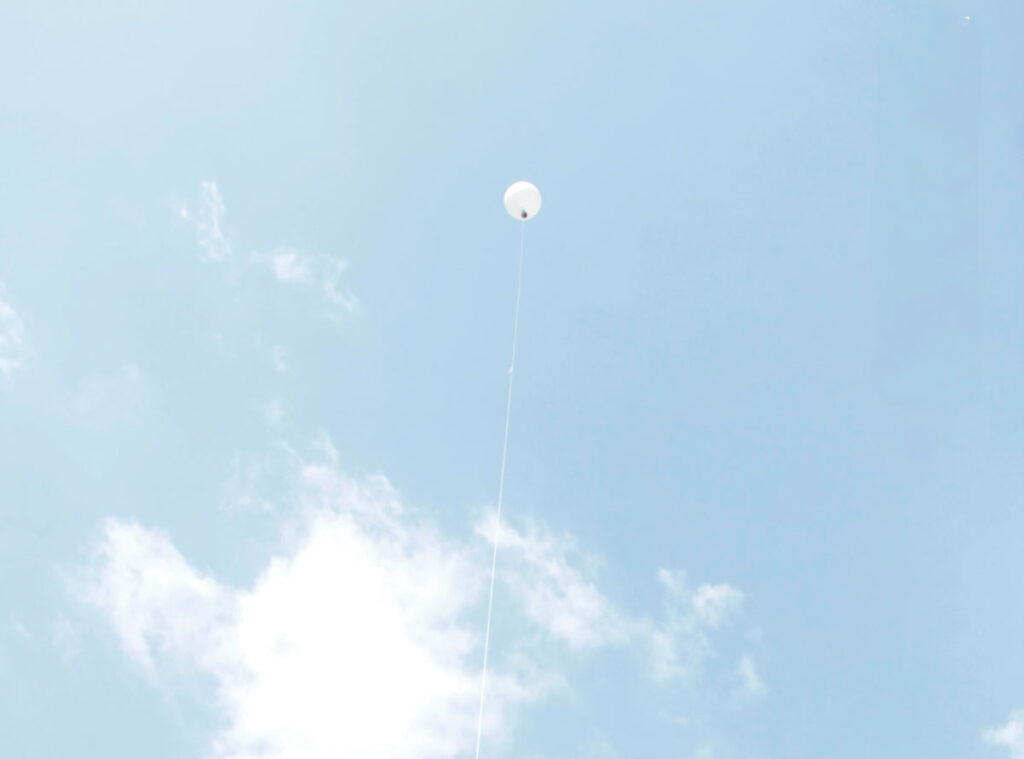When Devin Phyllides graduates from college next year, she’ll be able to boast something few students can: She’ll have helped launch a satellite into space.
“It’s probably my favorite job I’ve ever had,” she said.
Phyllides, a senior undergraduate physics student at the University of New Hampshire (UNH) in Durham, is a research assistant for the 3UCubed CubeSat project, a collaboration between UNH, Howard University in Washington, D.C., and Sonoma State University in Rohnert Park, Calif.
CubeSats are small satellites first developed in 1999 as a platform for education and space exploration. They are measured in “units” or U, where a 1U CubeSat is a cube measuring 10 centimeters per side. A 2U CubeSat is equivalent to two 1U CubeSats stacked together, a 3U CubeSat is three cubes stacked together, and so on. The NASA-funded 3UCubed satellite is the size of a 1-quart milk carton.
Dozens of people from the three universities have helped design, build, and test the satellite ahead of its planned October 2025 launch, and most of them are university students.
“The goal from the get-go of this CubeSat is to give students hands-on experience, not just in building…but in the full life cycle of a mission,” said Noé Lugaz, a space scientist at UNH and colead of the 3UCubed project.
Students around the world—high schoolers, undergraduates, and graduate students—have participated in CubeSat missions. Student-focused satellite programs not only provide important science in multiple fields but also inspire and engage the next generation of space scientists and engineers.
Why Build a CubeSat?
An entire aerospace industry has been developed around CubeSats, but the tiny satellites also remain a cornerstone of science, technology, engineering, and mathematics (STEM) education for all ages. Today, many of the satellites’ components, such as the chassis, navigation systems, cameras, and scanners, can be purchased off-the-shelf, and most don’t require advanced technical skills to assemble.
Building a CubeSat “still provides the challenge of putting everything together, and making sure the software works, and making sure that it does exactly what needs to be done,” said Floor Bagchus, a master’s student in aerospace engineering and the educational manager for the Da Vinci satellite at Delft University of Technology (TU Delft) in the Netherlands. But because so many of the components come ready to install, “it’s really a very accessible way for engineering students to learn how to make an actual satellite,” she said.
Some CubeSats are space-ready and are launched into orbit or released from the International Space Station. Others are not designed to leave the atmosphere and are lofted by atmospheric balloons for a short time before descending. Their small size and light weight make CubeSats ideally suited for doing science in the upper atmosphere or in low Earth orbit, such as studying Earth’s magnetosphere, atmosphere, and surface conditions.
CubeSats aren’t the only type of small, budget-friendly space mission in the game, Lugaz said, but in his opinion, they offer the most science per dollar and a realistic space mission experience.
In comparison with a CubeSat, “a balloon, for example, would be cheaper, faster, and maybe scientists can do faster turnover and reach more students,” Lugaz said. “A CubeSat is obviously a longer program. But the positive side of this is that the science you can do with a CubeSat is much more [varied and] is also better training for some of the jobs in industry.”
Their size also helps make the idea of space and satellites approachable, especially for younger students, Bagchus said.
“I think people are a bit scared of space, and teachers are scared of space, because they think that space is so gigantic, dark, vast, and complex,” she said. “How can you make sense of such a difficult thing? How can you make students not be so scared of it, and show them that you can actually work in space, do things in space, and overcome very difficult hurdles by very basic principles? I think it’s a very important thing to do in primary schools and high schools to show that you can actually do challenging things.”
Building STEM Pathways for High Schoolers
The simplicity of a CubeSat means that students with limited or no technical experience can learn how to select the satellite components, install the scientific payloads and navigation systems, design the software, and analyze data. In this way, CubeSats can be an entry point into STEM careers.
“I never really thought I’d be able to say that I launched a satellite to space in my high school years.”
In 2022, the Israel Space Agency launched the TEVEL CubeSat constellation, a program designed to provide high school students with a chance to build and launch satellites. Avigail Anidjar learned about the program when she was in eighth grade. When she started at Ulpanat AMIT Givat Shmuel High School near Tel Aviv the following year, she was excited to learn that the school was participating in the program’s second iteration. She joined TEVEL 2 in 2023, at 15 years old.
“I never really thought I’d be able to say that I launched a satellite to space in my high school years,” Anidjar said.
TEVEL 2 gave nine teams of Israeli high school students the opportunity to build and launch a 1U CubeSat. Building a satellite exposes students to an array of STEM fields, including atmospheric science, computer science, engineering, physics, and robotics.
The child of two engineers, Anidjar had taken introductory classes in physics and coding. Still, she learned a lot of hands-on skills in data analysis, computer programming, and problem-solving while working on her school’s CubeSat.
“I’ve always known that I want to go into this kind of field…but now I know that dealing with more space things and satellites is something that’s very interesting, and maybe I want to focus more on that,” she said.
Nine TEVEL 2 satellites, one from each participating school, launched in March 2025 and will operate together to measure the flux of high-energy particles and solar cosmic rays over roughly the next 2 years. The satellites also feature a transponder for ham radio communication.
Anidjar said the launch was “really stressful” but also very rewarding. “We saw our whole work actually come to life. And after a few days, we also got a beacon from it [showing] that it actually works and that it’s alive, and not just a piece of metal in space. It was really exciting.”
Anidjar recently graduated but remains on the satellite’s data analysis team.
Student-built CubeSats can be a tool for educational empowerment, said Maryam Sani, a STEM educator and advocate, and the education lead for the Space Prize Foundation, a U.S.-based nonprofit dedicated to promoting space education and innovation.
In October 2024, Space Prize sponsored the NYC CubeSat challenge, during which 38 high school– and college-age girls and gender minority students from Colombia, Saudi Arabia, the United Kingdom, and the United States spent three intensive days in New York City (NYC) learning what it takes to create a satellite.
The students were split into teams with others they had never met. Some had interest and prior knowledge about space or engineering from school or programs such as Space Camp. Others joined out of curiosity.
“And that was brilliant,” Sani said. “To quote one student, she said, ‘I just thought it would be something nice to do…I can’t believe how much I learned and how much this has made me more interested in finding out about the space industry.’ Which is exactly what we wanted.”
Throughout the program the students learned basic physics, circuitry, and coding. Each team brainstormed a problem in New York City that a CubeSat could help solve, designed the system, and then built it. Weather prevented the launches, but the participants collected and analyzed data from their creations on the ground.
Sani said that some of the students from Saudi Arabia extended their project after they went home, eventually launching their CubeSat and incorporating the data into an undergraduate project for electrical and computer engineering degrees.
The CubeSat challenge “was a surreal experience,” wrote one participant in her feedback form. “It made me feel more confident that being a woman in STEM was a possibility.”
Space for All
CubeSats can lower the barrier to entry for students around the world who can’t join rocketry programs or other STEM opportunities. CubeSat education programs can foster international participation and collaboration in science, even when pandemic lockdowns prevent in-person meetups.
In 2021, FIRST Global, a U.S.-based nonprofit that promotes international youth STEM education and engagement, hosted a CubeSat Prototype Challenge that enabled students from 176 countries to build and launch CubeSats. Among its initiatives, FIRST Global has organized annual Olympic-style robotics competitions for national youth teams since 2017. The competitions are typically held in-person, but the COVID-19 pandemic prevented the 2021 gathering. Organizers realized that a CubeSat challenge, which they had never done before, could be the answer if it were held remotely.
“We’re trying to connect the world, but we couldn’t do that physically,” said Matt Stalford, the communications director of FIRST Global. “We certainly could do that symbolically, and CubeSats were a huge part of that.”
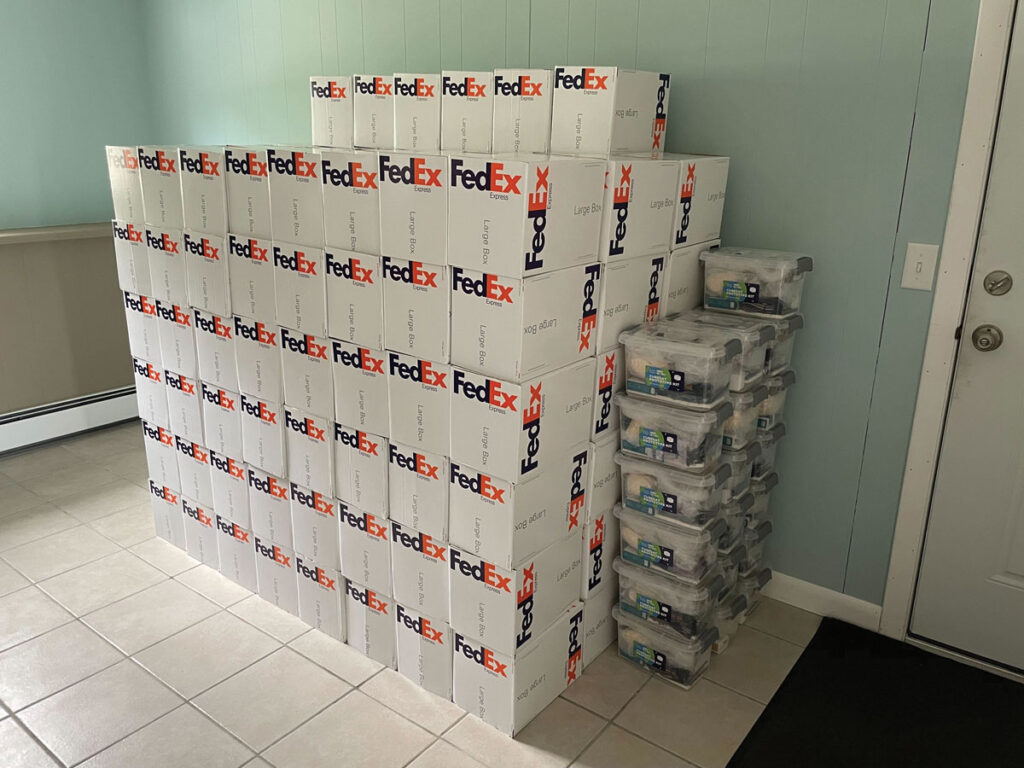
For the challenge, each national team—made up mostly of teenagers—defined a mission of importance to their community and designed a CubeSat to collect the data needed to solve it. For example, team Japan studied residual airborne radiation near the Fukushima nuclear site, Team Seychelles collected environmental data to improve local weather forecast accuracy, and Team Argentina studied how local atmospheric conditions obstruct radio transmissions. FIRST Global shipped each team a standardized CubeSat prototype assembly kit.
“Then they had to do the hard part of building it, launching it, taking that data, and writing a report on what that data produced,” Stalford said. Using balloons, the teams launched 90 CubeSats into the lower atmosphere.
Stalford said that asking students to design a satellite that could help solve a problem in their community made the CubeSat challenge more meaningful to them.
“Kids were built to care about the world,” he said. “When you can spark the imagination, when you can get them asking questions like, ‘How can I be part of the solution?’, that’s where kids come alive, and that’s how you spark that love of STEM.”
Reaching Even More Students
FIRSTGlobal’s CubeSat Prototype Challenge inspired the creation of other CubeSat programs, including one run by STEMbees in Accra, Ghana. STEMbees is a nonprofit organization whose mission is to increase the visibility and participation of girls and women in STEM in Ghana and to close the STEM gender gap across Africa.
A STEMbees expert mentored the eight girls from Team Ghana in the 2021 FIRST Global challenge. Team Ghana members built and launched their CubeSat during the challenge and wanted to launch another one after the contest ended. They took their blueprints, customized them with 3D printing, and built a new one. The group went to nearby Academic City University for a launch that attracted the attention of the university students and local community.
“We saw the impact that it created,” said Benedict Amoako, a robotics engineer and STEM instructor with STEMbees. “We had basically half the university students come out to see what these high school girls were trying to do on their large football pitch, and [they] were very impressed.”
Seeing the success of Team Ghana’s second launch made the STEMbees team want to expand its CubeSat program to reach even more students across Ghana, Amoako said. The organization partnered with AIMS Ghana and the U.S. Embassy in Ghana to create the Infinity Girls in Space Project. By August 2023, more than 110 girls from 37 schools across the country had learned about and helped build CubeSat prototypes.
Aerospace engineering and satellite imagery analysis are not commonly taught in primary or high school in Ghana, explained Lady-Omega Hammond, STEMbees product and start-up growth strategist. Unless a student goes into one of a few specific careers—for example, the military, telecommunications, or land surveying—“you might not find yourself, as a young person, wanting to think about what’s going on beyond the skies,” Hammond said. “CubeSats gave us a very interesting angle to pique the interest.”
During Infinity Girls in Space, STEMbees provided CubeSat prototype training modules, lesson plans, assembly kits, and technical resources to teachers and students at more than 3 dozen high schools across Ghana. Students learned 3D printing, satellite assembly, coding, and basic physics and atmospheric science. Cohorts from several nearby schools, joined in person by STEMbees experts, worked together for the builds and launches. The eight cohorts lofted 10 CubeSat prototypes into the lower atmosphere by balloon, and they collected images and basic atmospheric readings before their teams retrieved them.
Although some students struggled initially because the concepts were new to them, “I think it all came together when they were working as a team” and supporting one another through the learning process, Amoako said.
“The pride and joy that you see when the parents are coming to see the end result of what their girls have created is always very heartwarming.”
“The pride and joy that you see when the parents are coming to see the end result of what their girls have created is always very heartwarming,” Hammond said. Some participants have graduated and gone on to study engineering.
At the university level, students who participate in CubeSat missions can explore more complex technical and science skills such as payload design, spacecraft assembly, launch testing, and data pipeline development. They can then leverage this hands-on experience into academic or aerospace industry jobs. Postdoctoral researchers and senior graduate students gain experience mentoring newer team members and also experience a space mission’s life cycle.
3UCubed has been in development for several years. After launch into low Earth orbit, the satellite will measure how particle precipitation affects the polar thermosphere and the lifetime of satellites at this altitude.
To date, 68 undergraduate students and two graduate students have been part of the 3UCubed team. They have gone through all stages of mission development, Lugaz said, from concept and design reviews, to building, programming, and testing. After launch, students will be involved with collecting and analyzing data and publishing the results.
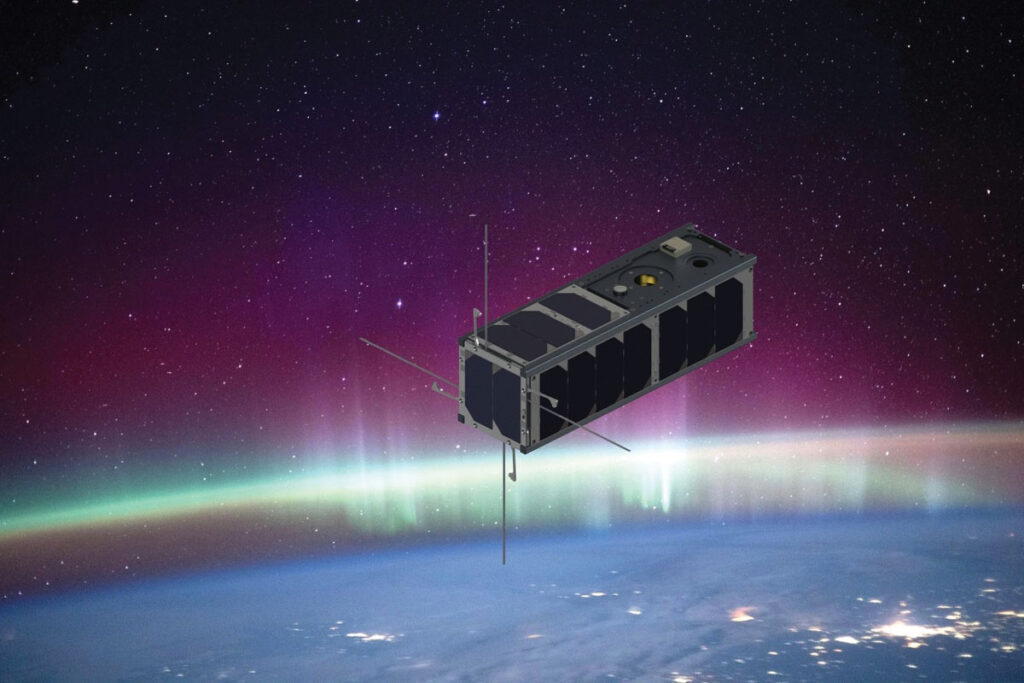
Teaching Future Teachers
TU Delft’s Da Vinci CubeSat offers those same experiences and skill development opportunities to its student team members, Bagchus said, and it also provides opportunities for those who want to become STEM educators.
“The goal of the satellite is, very simply put, purely educational,” Bagchus said. “We want to provide STEM education to inspire the future generation for STEM and also make them aware that space is literally all around them.”
Da Vinci is planned to launch in 2027 through a partnership with the European Space Agency. The 2U CubeSat will have two educational payloads: one geared toward primary schoolers and one for secondary schoolers. The team is writing and testing free lesson modules for each payload so that teachers and independent learners around the world can learn from the satellite. Members of the satellite team who want to become teachers themselves are gaining experience in developing lesson plans that incorporate satellite technology.
We asked the students, ‘What would you like to do in space?’ And the answer was, ‘I want to play in space.’”
“We did a primary school competition, and we asked the students, ‘What would you like to do in space?’” Bagchus explained. “And the answer was, ‘I want to play in space.’”
The team designed a payload that will allow students to roll dice in space. The satellite will send them pictures and videos of the dice rolling, so they can make statistical calculations and play chance games. The design involved figuring out the technical aspects of controlling a space-based dice roll from the ground and delivering the results in a way that’s accessible to primary schoolers.
The payload for secondary schoolers teaches them about how radiation in the space environment degrades digital photos when cosmic radiation strikes a pixel. One lesson plan for this payload guides students in developing computer code to restore image quality, similar to the Hamming codes used to process space telescope images—another practical lesson for students interested in space science.
The lesson plans and master classes for both modules will be available in-person and virtually.
“Not all people have the same access to education or can have their true potential achieved through education, because of where they were born, or maybe some personal issues they are facing,” Bagchus said. The Da Vinci satellite is “a beautiful initiative to at least try to help a little bit in that aspect.”
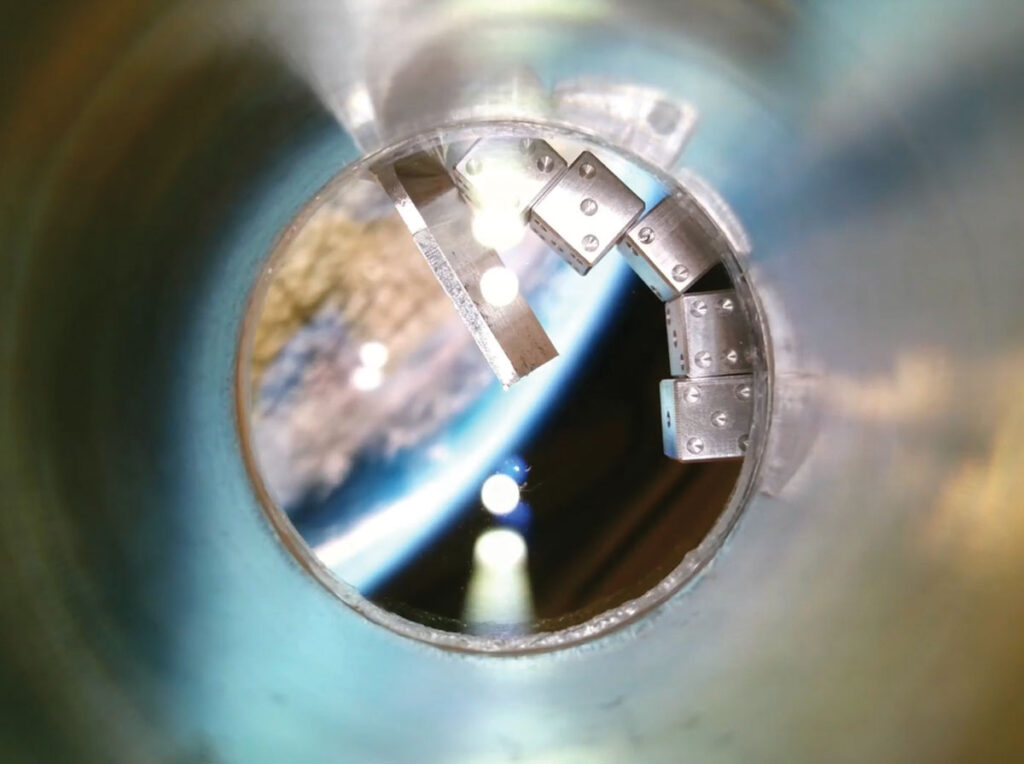
Launching into the Future
Some CubeSat prototypes are quick to develop. Others take years to complete. Case studies have found that lack of student training, time commitment constraints, and turnover from graduation can be challenges to CubeSat programs with longer lifespans. But using prototype kits and satellite simulators as well as dedicating time to hands-on training can overcome time and training issues, and turnover can provide an opportunity to get more students involved.
“You don’t find this in your everyday secondary school or even in university.”
“You don’t find this in your everyday secondary school or even in university,” Hammond said. The long-term influence of a CubeSat on its student team members might not be immediately clear, she said, “but I believe in a couple of years, it will definitely influence their thinking into why they chose a career in STEM or not.”
Phyllides, who joined 3UCubed last year, said she got involved with the program through a friend and had no experience with satellites when she started. Now, after more than a year calibrating the onboard instruments and analyzing test data, she’s eagerly awaiting the satellite’s launch.
“I want to see if the code that I’ve been writing will work and actually show our data,” she said. She hopes to analyze 3UCubed data as part of her senior project. “That would be like a huge, huge goal of mine.”
Last year, she presented on the 3UCubed mission at AGU’s annual meeting and found networking with other students involved with space missions to be a valuable experience. She’s still figuring out what she wants to do after graduation, but her work with 3UCubed has expanded her horizons.
“It’s really, really awesome,” she said. “I’m very, very lucky.”
—Kimberly M. S. Cartier (@astrokimcartier.bsky.social), Staff Writer

